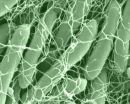(Press-News.org) HOUSTON -- (Feb. 11, 2013) -- Cancer researchers from Rice University suggest that a new man-made drug that's already proven effective at killing cancer and drug-resistant bacteria could best deliver its knockout blow when used in combination with drugs made from naturally occurring toxins.
"One of the oldest tricks in fighting is the one-two punch -- you distract your opponent with one attack and deliver a knockout blow with another," said José Onuchic of Rice's Center for Theoretical Biological Physics (CTBP). "Combinatorial drug therapies employ that strategy at a cellular level.
"A wealth of research in recent years has shown that both cancer and bacteria can mount sophisticated, coordinated defenses against almost any drug," said Onuchic, Rice's Harry C. and Olga K. Wiess Professor of Physics and Astronomy, professor of chemistry, and biochemistry and cell biology. "By combining drugs, particularly those that place stress on different parts of the cell, we expect it will be possible to knock out either cancer cells or bacteria while simultaneously inhibiting their ability to become drug-resistant."
Onuchic and CTBP colleagues Eshel Ben-Jacob and Patricia Jennings reached their conclusions after analyzing several studies on anti-microbial peptides (AMPs), corkscrew-shaped chains of amino acids that kill Gram-negative bacteria. The CTBP team's ideas appear this week in the Proceedings of the National Academy of Sciences (PNAS) as a commentary on new findings from MD Anderson Cancer Center about a promising synthetic AMP called D-KLAKLAK-2. In its new research, MD Anderson researchers found D-KLAKLAK-2, which was already known to kill cancer cells, is also an effective drug against antibiotic-resistant Gram-negative bacteria.
"AMPs are produced naturally by a number of animals to fight bacteria," said Ben-Jacob, professor of biochemistry and cell biology at Rice and the Maguy-Glass Chair in Physics of Complex Systems and professor of physics and astronomy at Tel Aviv University. "AMPs are corkscrew-shaped. They do not harm the animals' own cells, but they penetrate and shred the double-layered membranes of Gram-negative bacteria."
Gram-negative bacteria are a class of pathogens that includes drug-resistant varieties of bacteria that cause pneumonia, sepsis and other deadly diseases.
Ben-Jacob said cancer researchers have previously shown that they can tag AMPs with special "marker" molecules that allow the AMPs to penetrate and kill cancer cells. The markers allow the AMPs to be taken inside the cancer cells, something they cannot normally do.
"Once inside the cancer cells, the AMPs target and damage the cell's power plant, an organelle called the mitochondria, which has a double-layered membrane that is remarkably similar to that of Gram-negative bacteria," he said.
Though research has shown that AMPs can kill cancer cells, scientists are concerned that cancer cells could develop resistance to the compounds. In part, this concern arises from the fact that AMPs are fairly common in nature and that some organisms already have genetic mutations that allow them to evade AMP attacks.
To circumvent these natural defenses, MD Anderson researchers Wadih Arap and Renata Pasqualini led an effort a few years ago to create a synthetic version of a natural corkscrew-shaped AMP called KLAKLAK-2. Like all naturally occurring AMPs, KLAKLAK-2 has a left-handed twist -- much like the threads of a screw that turn clockwise. To make the molecule more difficult for cancer cells to fight, the MD Anderson team built a right-handed, "counterclockwise" version of the molecule called D-KLAKLAK-2, with the "D" denoting right-handedness. In its most recent studies, which also appear this week in PNAS, the MD Anderson team found that D-KLAKLAK-2 is an effective killer of Gram-negative bacterial pathogens, including several types that have grown resistant to traditional antibiotics.
"Bacteria are notorious for their rapid development of drug resistance," Ben-Jacob said. "However, both bacteria and cancer have impaired ability to resist these man-made 'mirror' compounds because they cannot use the machinery they have evolved to disarm the right-handed weapons."
Onuchic said another advantage of therapies involving synthetic AMPs like D-KLAKLAK-2 is that the drugs can be administered in extremely small doses, which will reduce side effects.
The Rice team suggests maximizing the benefits of synthetic AMPs by using them in drug cocktails that act like a one-two punch for either bacteria or cancer.
Naturally occurring AMPs are chemical weapons that bacteria themselves have developed over millions of years in their never-ending war among themselves. The team reasons that combining these natural toxins with man-made mirror drugs will create the drug equivalent of a one-two punch. The combination should "confuse" bacteria and cancer and prevent them from rapidly becoming resistant to the man-made drugs.
"Nature is smarter than we are," Ben-Jacob said. "Time and again, we have seen that seemingly simple cellular foes like bacteria and cancer can learn to mount effective defenses against any new drug we create. It is time to accept them as sophisticated enemies. We should attack them in much the same way that a well-trained boxer or military commander would go after a wily opponent -- with multiple, coordinated blows of very different kinds."
INFORMATION:
Jennings is professor of chemistry and biochemistry at the University of California, San Diego. Research at CTBP is supported by the National Science Foundation and by the Cancer Prevention and Research Institute of Texas.
High-resolution IMAGES are available for download at:
http://news.rice.edu/wp-content/uploads/2013/02/0211-CANCER-cell-lg.jpg
CAPTION: Rice University scientists have proposed using a combination of drugs to fight cancer and drug-resistant bacteria. The drug cocktails would contain a synthetic drug with a "counterclockwise" twist not found in nature as well as clockwise-shaped natural toxins.
CREDIT: Photos.com/Rice University
http://news.rice.edu/wp-content/uploads/2013/02/0211-CANCER-ecoli-lg.jpg
CAPTION: New synthetic drug molecules that have a "counterclockwise" twist have recently proven effective against drug-resistant bacteria like this P. vortex.
CREDIT: C. Ingham and E. Ben-Jacob
1-2 punch strategy against bacteria and cancer
Combining synthetic, natural toxins could disarm cancer, drug-resistant bacteria
2013-02-12
ELSE PRESS RELEASES FROM THIS DATE:
Strokes associated with surgery can be devastating
2013-02-12
MAYWOOD, Il. – Strokes that occur during or shortly after surgery can be devastating, resulting in longer hospital stays and increased risks of death or long-term disability.
But prompt identification and treatment of such strokes can improve neurologic outcomes, according to an article in the journal Expert Review of Neurotherapeutics by Loyola University Medical Center stroke specialists Sarkis Morales-Vidal, MD and Michael Schneck, MD.
The article answers commonly asked questions about the management of perioperative stroke. (A perioperative stroke is a stroke that ...
NASA sees Tropical Cyclone 15S form in So. Indian Ocean
2013-02-12
The fifteenth tropical cyclone of the Southern Indian Ocean season strengthened into a tropical storm today, Feb. 11, and NASA's Aqua satellite passed overhead hours after it reached tropical storm strength.
Tropical Cyclone 15S was born from the low pressure area designated as System 92S. System 92S developed on Feb. 9 and intensified into a tropical storm on Feb. 11 at 0300 UTC. At that time, Tropical Cyclone 15S had maximum sustained winds near 35 knots (40.2 mph/64.8 kph), making it a tropical storm. It was centered near 12.1 south latitude and 82.5 east longitude, ...
NASA eyes the birth of Tropical Cyclone Haley
2013-02-12
Tropical Cyclone Haley was forming quickly as NASA's Aqua satellite captured an image of the storm in the South Pacific Ocean.
On Feb. 9 at 2020 UTC (3:20 p.m. EST) the Moderate Resolution Imaging Spectroradiometer (MODIS) instrument aboard NASA's Terra satellite captured a visible image of System 93P (known in Fiji as 14F). The MODIS image showed a circular center of circulation with banding features, two things that indicated that the low pressure area was quickly organizing. The next day, the low became Tropical Storm Haley.
Tropical Cyclone Haley formed on Feb. ...
Parents' praise predicts attitudes toward challenge 5 years later
2013-02-12
Toddlers whose parents praised their efforts more than they praised them as individuals had a more positive approach to challenges five years later. That's the finding of a new longitudinal study that also found gender differences in the kind of praise that parents offer their children.
The study, by researchers at the University of Chicago and Stanford University, appears in the journal Child Development.
"Previous studies have looked at this issue among older students," according to Elizabeth A. Gunderson, Assistant Professor of Psychology at Temple University; Gunderson ...
Negative stereotypes about boys hinder their academic achievement
2013-02-12
Negative stereotypes about boys may hinder their achievement, while assuring them that girls and boys are equally academic may help them achieve. From a very young age, children think boys are academically inferior to girls, and they believe adults think so, too. Even at these very young ages, boys' performance on an academic task is affected by messages that suggest that girls will do better than they will.
Those are the conclusions of new research published in the journal Child Development and conducted at the University of Kent. The research sought to determine the ...
Differential parenting found to affect whole family
2013-02-12
Parents act differently with different children—for example, being more positive with one child and more negative with another. A new longitudinal study has found that this behavior negatively affects not only the child who receives more negative feedback, but all the children in the family. The study also found that the more risks experienced by parents, the more likely they will treat their children differentially.
Carried out at the University of Toronto with researchers from McMaster University and the University of Rochester, the study appears in the journal Child ...
Teaching teens that people can change reduces aggression in school
2013-02-12
Teenagers from all walks of life who believe people can't change react more aggressively to a peer conflict than those who think people can change. And teaching them that people have the potential to change can reduce these aggressive reactions.
Those are the findings of a new study published in the journal Child Development. The research was conducted at the University of Texas at Austin, Emory University, and Stanford University.
Prior research has shown that children who grow up in hostile environments, such as high-violence neighborhoods, are more likely to interpret ...
Alcohol abusers' depression often related to drinking
2013-02-12
PISCATAWAY, NJ – For problem drinkers, bouts of depressive symptoms are often the direct result of their heavy alcohol intake, according to a study in the March issue of the Journal of Studies on Alcohol and Drugs.
Experts have long known that heavy drinking can spur temporary episodes of depression—what's known as "substance-induced depression." However, this information is not always apparent to busy clinicians, and the new findings strengthen the evidence that the phenomenon exists as well as how common and clinically important it is.
"I don't know that the average ...
Anti-Muellerian hormone predicts IVF success
2013-02-12
Chevy Chase, MD ––Women with a high concentration of anti-Müllerian hormone stand a better chance of giving birth after in vitro fertilization, according to a recent study accepted for publication in The Endocrine Society's Journal of Clinical Endocrinology & Metabolism (JCEM).
Anti-Müllerian hormone (AMH) is produced by the ovaries. The study found women with high AMH levels were 2.5 times more likely to have a successful IVF cycle than women of a similar age with low levels of the hormone. AMH levels were a predictor of pregnancy and live birth, even when the mother's ...
Cardiovascular risk may remain for treated Cushing's disease patients
2013-02-12
Chevy Chase, MD ––Even after successful treatment, patients with Cushing's disease who were older when diagnosed or had prolonged exposure to excess cortisol face a greater risk of dying or developing cardiovascular disease, according to a recent study accepted for publication in The Endocrine Society's Journal of Clinical Endocrinology & Metabolism (JCEM).
Cushing's disease is a rare condition where the body is exposed to excess cortisol – a stress hormone produced in the adrenal gland – for long periods of time.
Researchers have long known that patients who have ...
LAST 30 PRESS RELEASES:
University of Oklahoma researcher awarded funding to pursue AI-powered material design
Exploring how the visual system recovers following injury
Support for parents with infants at pediatric check-ups leads to better reading and math skills in elementary school
Kids’ behavioral health is a growing share of family health costs
Day & night: Cancer disrupts the brain’s natural rhythm
COVID-19 vaccination significantly reduces risk to pregnant women and baby
The role of vaccination in maternal and perinatal outcomes associated with COVID-19 in pregnancy
Mayo Clinic smartwatch system helps parents shorten and defuse children's severe tantrums early
Behavioral health spending spikes to 40% of all children’s health expenditures, nearly doubling in a decade
Digital cognitive behavioral treatment for generalized anxiety disorder
Expenditures for pediatric behavioral health care over time and estimated family financial burden
Air conditioning in nursing homes and mortality during extreme heat
The Alps to lose a record number of glaciers in the next decade
What makes a good proton conductor?
New science reporting guide published for journalists in Bulgaria
New international study reveals major survival gaps among children with cancer
New science reporting guide published for journalists in Turkey
Scientists develop a smarter mRNA therapy that knows which cells to target
Neuroanatomy-informed brain–machine hybrid intelligence for robust acoustic target detection
Eight SwRI hydrogen projects funded by ENERGYWERX
The Lundquist Institute and its start-up company Vitalex Biosciences Announces Strategic Advancement of Second-Generation fungal Vaccine VXV-01 through Phase 1 Trials under $40 Million Competitive Con
Fine particles in pollution are associated with early signs of autoimmune disease
Review article | Towards a Global Ground-Based Earth Observatory (GGBEO): Leveraging existing systems and networks
Penn and UMich create world’s smallest programmable, autonomous robots
Cleveland researchers launch first major study to address ‘hidden performance killer’ in athletes
To connect across politics, try saying what you oppose
Modulating key interaction prevents virus from entering cells
Project explores barriers to NHS career progression facing international medical graduates
Jeonbuk National University researchers explore the impact of different seasonings on the flavor perception of Doenjang soup
Two Keck Medicine of USC Hospitals named Leapfrog Top Teaching Hospitals
[Press-News.org] 1-2 punch strategy against bacteria and cancerCombining synthetic, natural toxins could disarm cancer, drug-resistant bacteria


